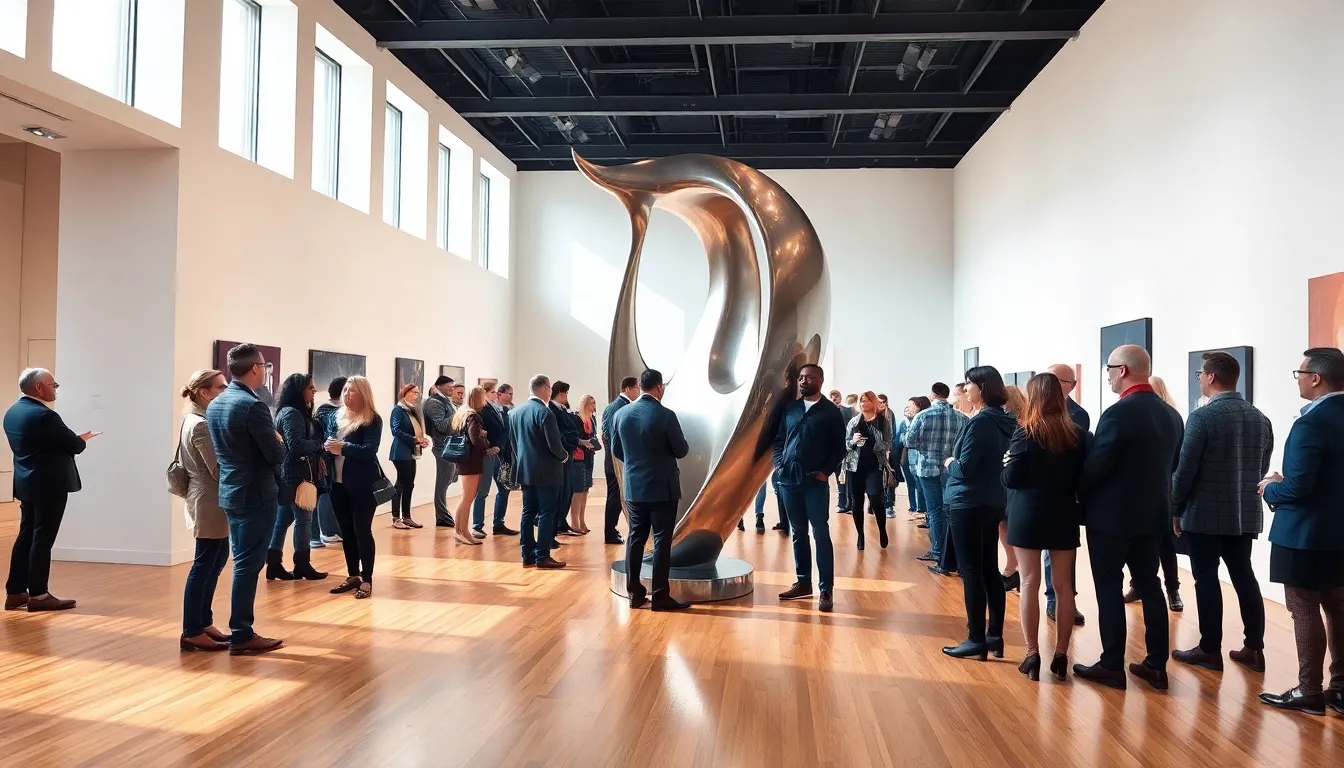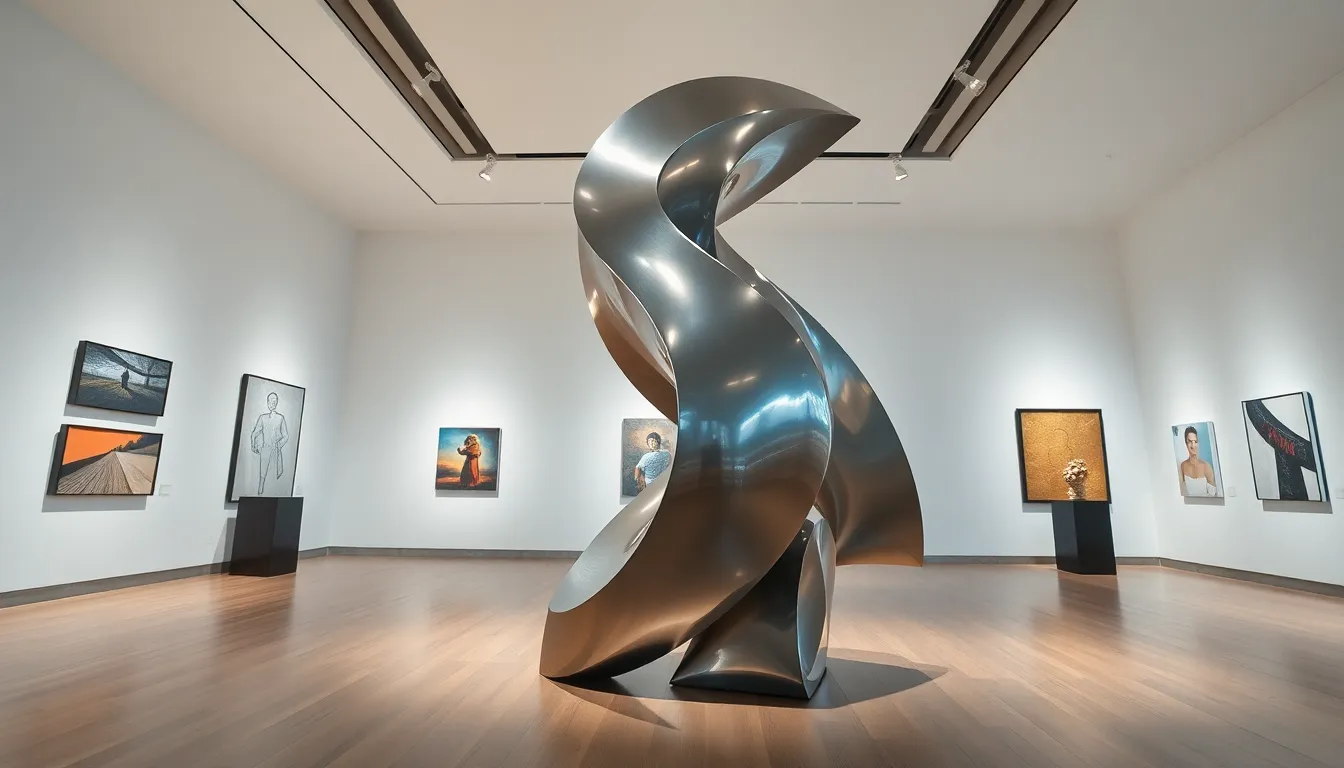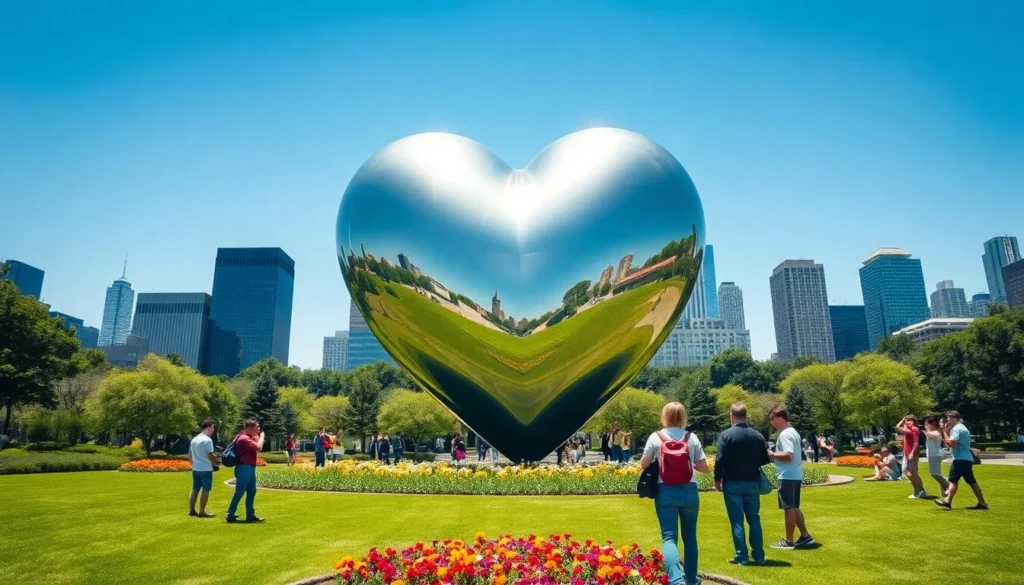Table of Contents
ToggleHave you ever strolled through a gallery and been captivated by a free standing sculpture? These three-dimensional masterpieces don’t just sit there: they stand tall, beckoning viewers to engage visually and emotionally. From ancient times to modern art, free standing sculptures offer a unique opportunity to explore creativity and craftsmanship. This article will unravel the intriguing history, diverse types, and innovative techniques involved in the creation of these stunning works of art while keeping the tone light and engaging.
History of Free Standing Sculpture

Free standing sculpture has a rich history that stretches back thousands of years. The earliest examples can be found in ancient civilizations such as Egypt and Greece, where artists crafted statues of deities, pharaohs, and prominent figures. These sculptures were often massive, serving not only an aesthetic purpose but also a spiritual one, inspiring awe and reverence.
As time wove through various artistic movements, the role of free standing sculpture evolved. The Renaissance era saw a resurgence in interest in realism and human form, exemplified by renowned artists like Michelangelo and Donatello. Their works brought life and emotion to stone, transforming static materials into dynamic narratives.
In the 20th century, the art of free standing sculpture underwent further transformation. Movements like Cubism and Abstract Art challenged traditional forms, leading artists to explore new ideas of space and form. Hence, free standing sculptures began to not only represent figures but also express concepts and emotions, redefining viewers’ interactions with art.
Types of Free Standing Sculptures
Free standing sculptures exist in a plethora of forms, showcasing the versatility of this artistic medium. Here are some prominent types that artists often explore:
Figurative Sculptures
These depict human figures or animals with recognizable shapes. They often convey a narrative or embody a particular emotion. Classic examples can include statues of historical figures or mythological beings.
Abstract Sculptures
Engaging viewers through forms that defy direct representation, abstract sculptures invite personal interpretations. They can range from simple geometric shapes to complex structures that challenge the mind’s perception of space and form.
Kinetic Sculptures
With movement as their defining characteristic, kinetic sculptures incorporate elements that move or shift. This type blurs the boundaries of art and engineering, captivating audiences as they engage with dynamic forms.
Environmental Sculptures
These sculptures interact with their surroundings, often utilizing natural landscapes. Artists like Andy Goldsworthy create free standing works that invite viewers to appreciate nature through sculptural forms.
Materials Used in Free Standing Sculpture
The materials used to create free standing sculptures can significantly influence their appearance and durability. Artists choose their medium based on aesthetic goals, practicality, and the intended message. Here are some common materials:
Stone
Traditionally favored for its permanence and grandeur, stone has been the go-to material for many famous sculptures throughout history. Marble, granite, and limestone are among the most popular choices, each offering unique textures and colors.
Metal
Metals such as bronze, aluminum, and stainless steel allow for both intricate detail and bold designs. Bronze sculptures, for example, often achieve a desired patina that adds depth to the final piece.
Wood
Utilized for both its warmth and versatility, wood offers a different scope in sculptural design. It permits intricate carving and a variety of finishes, allowing artists to express diverse styles.
Mixed Media
Increasingly, sculptors are gravitating toward mixed media, combining various materials to stimulate the senses. These can challenge traditional notions and encourage audiences to rethink their understanding of sculpture.
Techniques in Creating Free Standing Sculptures
The creation of free standing sculptures involves a variety of techniques that reflect both the artist’s vision and the chosen materials. Traditional methods coexist with modern innovations, leading to fascinating results. Here are some key techniques:
Carving
A method dating back to ancient times, carving involves removing material to reveal the desired form. Whether sculpting stone or wood, this technique requires skill and a deep understanding of the material’s properties.
Modeling
In contrast, modeling entails building up a form. Usually applied to clay or wax, this technique allows for spontaneity and flexibility, enabling the artist to manipulate shapes before finalizing the sculpture.
Casting
This method involves creating a mold and pouring a suitable material into it, allowing for precise replication of a form. Commonly used with metals and ceramics, casting is favored for producing intricate details that might be too challenging to carve directly.
Assembling
This approach involves combining various pre-made components to create a sculpture. It allows artists to explore juxtaposition and contrast while harmonizing disparate materials into a cohesive piece.
Famous Free Standing Sculptures Around the World
Some free standing sculptures have attained iconic status, drawing visitors worldwide. Here are a few notable examples:
David by Michelangelo
Housed in Florence, Italy, Michelangelo’s David is perhaps the most renowned free standing sculpture, celebrated for its beauty and grandeur. This masterpiece exemplifies the Renaissance’s commitment to realism and detail.
The Thinker by Auguste Rodin
Located at the Musée Rodin in Paris, this iconic figure symbolizes deep contemplation. Rodin’s ability to convey thought and emotion through bronze captures the essence of the human experience.
The Statue of Liberty
A gift from France to the United States, this symbol of freedom and democracy stands tall in New York Harbor. Designed by Frédéric Auguste Bartholdi, it merges artistry with meaning, welcoming millions of immigrants throughout the years.
Cloud Gate by Anish Kapoor
Affectionately known as “The Bean,” this modern sculpture in Chicago reflects the skyline in mesmerizing ways. Its unusual shape and polished surface create an interactive experience that encourages playfulness and exploration.
The Role of Free Standing Sculpture in Contemporary Art
Free standing sculptures occupy a significant role in contemporary art, offering a platform for artists to challenge conventions and push boundaries. With societal themes and technological advancements influencing today’s creativity, these artworks are often more than visual experiences: they provoke thought and spur dialogue.
Many contemporary artists embrace unorthodox materials, integrating technology and eco-conscious practices into their sculptures. Interactive installations invite viewers to engage physically and emotionally, transforming passive spectators into active participants.
Besides, the rise of digital art and 3D printing has expanded creative possibilities, with artists experimenting with forms previously unimaginable. The evolution of free standing sculpture continues to redefine artistic norms, ensuring that it remains a vital and dynamic medium in the ever-changing landscape of art.




